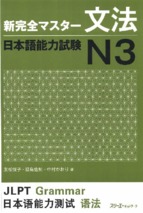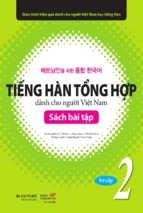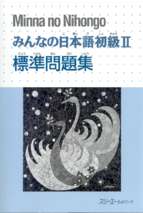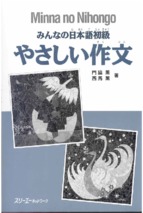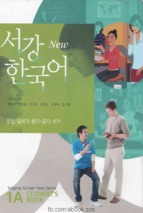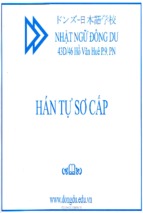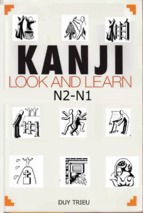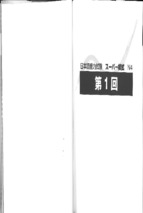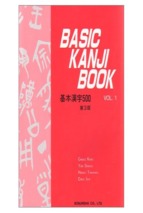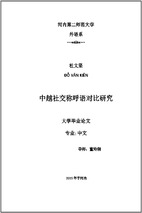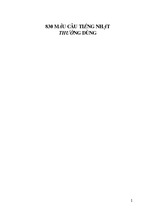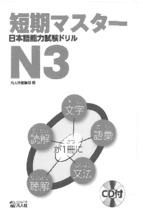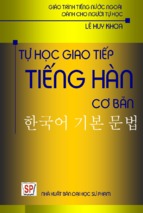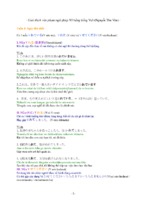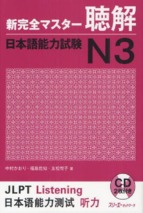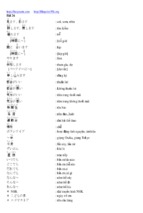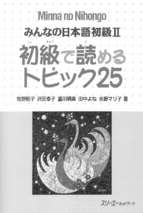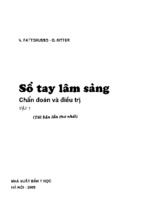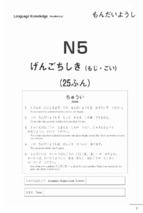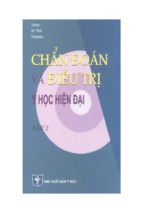6
영어권 『맞춤 한국어』는 한글학교에서 한국
고 판단하였기 때문이며, 이때 다양한 연습 유
어를 배우는 영어권 어린이들을 위한 교재이
형과 활동으로 학습에 대한 부담을 덜어 주려
다. 그중 6권인 본 교재는 초등학교 3, 4학년
하였다. 둘째, 실생활에서 유용하게 사용될 수
수준의 학생에게 초점을 맞춘 교재로서 일상
있는 구어 표현을 중심으로 구성하되 읽기 및
생활에 필요한 한국어 표현을 어린이들의 눈
듣기 활동을 통해 문어 표현도 제시하여 다양
높이에 맞는 재미있고 다양한 활동을 중심으
한 한국어 표현을 익히고 사용할 수 있도록
로 구성하였다.
하였다. 셋째, ‘고딕체’를 사용하여 가독성을
본 교재는 한글학교의 교육과정을 고려하
높이고 글자체에서 올 수 있는 혼돈을 줄였다.
여 개발되었다. 한 학기의 수업 시간(주 1회
교재는 본문을 중심으로 새로 나온 단어와
2~3시간)에 맞게 전체 단원을 16개로 정하고
문형을 익히는 ‘배워 봐요’와 배운 내용을 토대
1주에 한 개 단원을 학습할 수 있도록 구성하
로 ‘이야기해요’, ‘읽어 봐요’, ‘들어 봐요’, ‘써 봐
였다. 특히 3개 단원을 1개의 챕터(chapter)로
요’의 언어 기능별 다양한 연습 활동으로 구성
묶어 단계별 학습뿐만 아니라 학습 내용 확인
하였다. 교재 구성을 세부적으로 살펴보면 다
및 심화 학습이 가능하도록 구성한 것이 특징
음과 같다.
이라고 할 수 있다. 또한 학습자들이 해외에
거주하는 점을 감안하여 힌국 문화를 자연스
럽게 접하게 하는 동시에 비교문화적 관점에
교재 구성
서 세계 여러 나라의 문화를 다룸으로써 문화
에 대한 열린 자세를 가질 수 있도록 도모하
였다. 무엇보다 학습자들이 영어권 어린이들
본문은 단원에서 목표로 하는 문형과 어휘
이라는 점을 고려하여 본문을 제외한 모든 학
를 포함하고 있는 8~10문장 정도의 대화문
습 내용과 연습 활동의 지시문을 한국어와 영
또는 서술문으로 제시하였다. 본문에는 주제
어로 모두 제시하였으며, 부록으로 한국어와
와 관련된 그림을 삽화로 제시하여 학습자의
영어 단어 색인, 본문의 영어 번역, 단원별 학
이해를 돕고자 하였다.
습 내용의 영어 소개란을 두었다.
내용 구성에 있어서 본 교재의 특성은 다음
과 같다. 첫째, 문법이 아닌 문형 중심으로 교
2
▣ 배워 봐요
육 내용을 구성하였다. 교실에서 배운 내용을
단원에서 배워야 하는 어휘와 표현을 제시
가정이나 또래 집단에서 곧바로 활용할 수 있
하였다. 어휘는 본문, 읽기, 듣기 등에 새로 출
도록 하려면 문형 중심의 교육이 실용적이라
현한 어휘로 구성되어 있으며 명사-동사-형
맞춤 한국어
용사-부사-연어 구성 표현 순으로 배열했다.
▣ 써 봐요
문법 및 표현에서는 각 단원에 3개씩 제시했
배운 표현을 활용하여 문장을 직접 구성해
으며 목표 표현 부분은 글자의 색깔을 다르게
볼 수 있도록 각 과 마지막에 문장 완성하기
하여 시각적으로 부각시키고자 하였다. 또한
활동을 배치하였다. 또한 리사이클링 단원에
모든 내용에 영어 번역을 병기하여 학습자의
서는 해당 챕터(chapter)의 주제와 관련된 작
이해를 돕고자 하였다.
문 활동을 할 수 있도록 하였다.
▣ 연습해요
▣ 문화 배우기
새로 배운 표현을 반복적으로 연습할 수 있
사진이나 그림 자료와 함께 한국 문화를 소
도록 하였다. 형태 중심으로 반복 연습하게
개하는 것을 주 목적으로 하되 일방적인 한국
함으로써 새 표현에 자연스럽게 익숙해지도
문화만 소개하는 것이 아니라 학습자가 속한
록 하였다.
문화권의 문화와 자연스럽게 비교해 보도록
함으로써 문화상대주의적 시각을 기를 수 있
▣ 이야기해요
새로 배운 단어나 문형을 짝 활동 또는 모
도록 하였으며, 다양한 한국 문화의 모습과 어
린이들이 흥미를 가질 만한 소재를 다루었다.
둠 활동을 통해 직접 사용해 볼 수 있도록 하
였다. 예시 대화문을 주어 참고할 수 있도록
하였다.
▣ 읽어 봐요
일기, 안내문, 게시판, 광고 등 실생활에서
접할 수 있는 텍스트 자료를 활용하여 한국어
담화 구조를 익히고 독해 능력을 향상시킬 수
있도록 하였다.
▣ 들어 봐요
확인 및 심화 단원에 일상 대화부터 문의
및 상담 대화, 또는 안내 방송 등의 다양한 담
화 상황을 듣고 이해할 수 있도록 듣기 활동
을 편성하였다.
일러두기
3
Introduction
4
Korean School: Korean Language is a
textbook used in Korean school for Englishspeaking children. Six volumes of the text
are used as a core text to instruct third and
fourth year elementary school students in
the rudiments of Korean language related
to daily life. The book contains interesting
subjects and a variety of activities to facilitate
learning.
The textbook was designed with the
concerns of education in mind. The text
is intended to be easily adaptable in the
classroom as it contains 16 units (1 unit
per week, each lesson lasting 2-3 hours). A
review chapter follows every third chapter to
solidify learning and to enrich understanding.
In consideration of those students residing
outside of Korea, efforts have been made to
teach Korean culture within a global context
allowing for a basic framework for studies
in comparative culture. With the needs
of English-speaking learners in mind, the
instructions for all activities are given in both
Korean and English. As well, students may
consult the appendix at the back of the book
as well as a glossary of terms for translated
Korean terms.
away at home or with their peers and thus
the book espouses a decidedly practical
approach to learning. To this end, students
learn by engaging in a variety of activities
intended to reduce anxieties related to
learning. Secondly, although an emphasis is
placed on the functional aspect of language
and the vernacular in speaking and listening
exercises, students will also be able to learn
and use literary variants of Korean language
as well. Thirdly, in order to reduce confusion
and increase readability, the book utilizes
Gothic type font.
The text reinforces student learning of new
vocabulary and sentence structure through
‘Let’s Learn’, and various exercises based
on the content of learning are designed to
strengthen language skills such as ‘Let’s Talk,
Let’s Read, Let’s Listen and Let’s Write’.
The special features of the textbook are
as follows. First, proper sentence structure
formation, rather than excessive grammar
rules, constitutes the main focus of each
chapter. The aim of the book is to have
students use the language they learn right
patterns presented by giving sample dialogs
as well as descriptive sentences. Illustrations
and pictures accompany the subjects
presented in the text to assist learning.
맞춤 한국어
Book Content
Every unit in the book is devoted to teaching
8 to 10 key vocabulary words and sentence
▣ Let’s Learn!
Key vocabulary terms and expressions
are presented in each unit. New vocabulary
is presented through various exercises such
as reading and listening. Wherever possible,
variant parts of speech for each new word
are presented (noun, verb, adjective,
adverb, and collocation). Every unit also
contains 3 grammatical sentence types as
well as expressions which are highlighted
by a different color in the text to heighten
awareness. As well, in order to assist learning,
the contents of this section are rendered in
English alongside the Korean.
▣ Let’s Practice!
This section presents an opportunity
to practice new knowledge. Students are
encouraged to use what they have learned
within an appropriate, natural context.
▣ Let’s Talk!
Students can practice using new vocabulary
and sentence patterns in speech. Natural
dialogs are given wherein students can
actively participate.
▣ Let’s Read!
Students are presented with a variety
of reading pieces from diverse sources
(journals, announcements, bulletin boards,
advertisement, etc.) with the aim of expanding
linguistic and cultural knowledge.
▣ Let’s Listen!
Students will be able to listen to a dialog
to illustrate the key concepts of the chapter
in order to reinforce learning. Besides
conversations, students will listen to
announcements and other sound samples in
order to improve their listening skills.
▣ Let’s Write!
In order to make sentences using their
learning of key expressions and words by
oneself, activities of sentence completion
are designed for the last part of each chapter.
In addition, students are presented with an
opportunity to write on a topic related to each
chapter for recycling unit.
▣ Let’s look at Korean culture!
Photographs or illustrations are presented to
introduce an aspect of Korean culture. This
is an opportunity for students to compare and
contrast their own culture to Korean culture.
The topics for discussion are chosen with the
needs and interests of young learners in mind.
일러두기
5
목 차
01 우리 반에서 전시회를 해요 Our class is going to have an exhibition ‥‥‥ 10
02 내가 할 줄 알아 I can do it myself‥‥‥‥‥‥‥‥‥‥‥‥‥‥ 18
03 즐거운 하루였어요 It was a fun day‥ ‥‥‥‥‥‥‥‥‥‥‥‥ 26
04 열이 나니까 푹 쉬세요 You have a fever, so you need to rest‥ ‥‥‥‥ 36
05 운동을 열심히 할게요 I will exercise hard‥ ‥‥‥‥‥‥‥‥‥‥ 44
06 생활 습관을 바꿔 보세요 Change your daily habits‥‥‥‥‥‥‥‥ 52
07 공원에 가서 자전거를 탈래? How about we go to the park to ride our bikes?‥ 62
08 한번 입어 보세요 Why don't you try it on?‥ ‥‥‥‥‥‥‥‥‥‥ 70
09 예쁜 꽃이 많을 것 같아요 I think there will be lots of beautiful flowers ‥‥ 78
6
맞춤 한국어
10 그동안 잘 지냈니? How have you been?‥ ‥‥‥‥‥‥‥‥‥‥ 88
11 소포를 보내러 가요 I am going to send a package‥‥‥‥‥‥‥‥‥ 96
12 겨울 방학이 기대가 돼 I’m looking forward to winter break‥‥‥‥‥ 104
13 민속촌에 가 봤어? Have you been to the folk village?‥‥‥‥‥‥‥ 114
14 한복 패션쇼에 가기로 했어 I am going to attend a hanbok fashion show‥ 122
15 가야금을 배우려고 합니다 I am going go learn the gayageum‥ ‥‥ 130
16 즐거운 추석이에요 It is happy Chuseok‥‥‥‥‥‥‥‥‥‥‥ 140
▣ 부록‥‥‥‥‥‥‥‥‥‥‥‥‥‥‥‥‥‥‥‥‥‥‥ 150
한글학교 한국어
7
등장인물
슬기
성진
수연
8
맞춤 한국어
민수
엠마
앤드류
지나
제임스
한글학교 한국어
9
제1과
Lesson 1
우리 반에서 전시회를 해요
Our class is going to have an exhibition
1
성진: 다음 주 금요일에 우리 반에서 전시회를 해요.
엄마: 그래? 무슨 전시회야?
성진: 지난 학기에 우리 반 친구들이 그린 그림들을 전시할 거예요.
엄마: 재미있겠다. 몇 시까지 가야 돼?
성진: �수업이 다 끝난 다음에 해요. 그러니까 3시까지 오세요.
엄마: �그래, 알았어. 아빠한테도 이따가 물어보자. 꼭 보고 싶어하
실 거야.
10
맞춤 한국어
Lesson
1
어휘 Vocabulary
견학
field trip
공연
상품
prize
전시회
들르다
to stop by
맞히다
performance
exhibition
to guess correctly
민속
퀴즈
전시하다
folklore
사물놀이
Korean traditional percussion quartet
quiz
to exhibit
필기도구
이따가
읽어봐요 Let’s Read!
writing supplies
later
문법 및 표현 Grammar and Expression
(1) AV+기 전에
밥을 먹기 전에 손을 씻어요. Before I eat, I wash my hands.
수영하기 전에 준비 운동을 하세요. Before you swim, you should warm-up.
집에 가기 전에 도서관에 들를 거예요. Before I go home, I will stop by the library.
(2) AV+(으)ㄴ 다음에
운동한 다음에 샤워를 해요. After I work out, I take a shower.
초콜릿을 먹은 다음에 이를 닦습니다. After I eat chocolate, I brush my teeth.
이 DVD를 다 본 다음에 친구에게 빌려줄 거예요.
After I watch this DVD, I will lend it to my friend.
(3) AV/DV+아/어야 되다
약속은 꼭 지켜야 돼요. You have to keep your promise.
저녁 먹기 전에 숙제를 해야 돼요. Before I eat dinner, I have to do my homework.
오늘은 집에 일찍 가야 돼요. I have to go home early today.
제1과 | 우리 반에서 전시회를 해요
11
1. 두 문장을 <보기>와 같이 연결하십시오.
보기
Connect two sentences following the example.
간식을 먹다/ 숙제를 하다 ⇒ 숙제를 하기 전에 간식을 먹었어요.
(1) 손을 씻다/ 밥을 먹다 ⇒
(2) 일기를 쓰다/ 자다 ⇒
읽어봐요 Let’s Read!
(3) 공부를 열심히 하다/ 시험을 보다
⇒
(4) 예약을 하다/ 여행을 가다
⇒
2. 그림을 보고 순서에 맞게 문장을 완성하십시오.
Look at the following pictures and complete the sentences in the correct
order.
저는 주말에 발레 공연을 볼 거예요. 공연을 보기 전에 컴퓨터로 예약을 할
거예요. 공연을
친구하고 식사를 할 거예요.
집에서 감상문을 쓸 거예요.
12
감상문을
선생님께 이메일을 보낼 거예요.
이메일을
잘 거예요.
맞춤 한국어
Lesson
1
3. 다음 질문에 답하십시오. Answer the following questions.
보기
가: 아침에 일찍 일어나고 싶으면 어떻게 해야 돼요?
나: 일찍 자야 돼요.
(1) 가: 시험을 잘 보고 싶으면 어떻게 해야 돼요?
나:
(2) 가: 농구를 잘하고 싶으면 어떻게 해야 돼요?
나:
(3) 가: 부모님을 기쁘게 해 드리고 싶으면 어떻게 해야 돼요?
나:
(4) 가: 친구들에게 인기가 많은 사람이 되고 싶으면 어떻게 해야 돼요?
나:
4. 교실에서 지켜야 할 규칙을 쓰십시오.
Write examples of some rules that you should keep in the classroom.
제1과 | 우리 반에서 전시회를 해요
13
⊙ �다음 중 한 가지 파티를 골라 친구들과 파티 계획을 세워 보세요. 그리고 <보기>와 같이
발표해 봅시다.
읽어봐요 Let’s Read!
Select one from the parties below and write how you would plan the event following the example.
(1) 파티에서 무엇을 할 거예요? What are you going to do at the party?
(2) 누가 무엇을 준비할 거예요? Who will organize the party?
(3) 순서는 어떻게 됩니까? What are the steps in preparing for the party?
보기
14
맞춤 한국어
우리는 우리 반 친구들의 장기자랑 대회를 할 것입니다. 먼저 장기자랑 대회
에 나오고 싶어하는 학생들을 모아야 됩니다. 그 다음에 초대장을 만들고, 상
품을 준비해야 됩니다. 또 교실을 예쁘게 꾸며야 합니다.
장기자랑 대회에 나오고 싶어하는 학생은 민수와 슬기가 모을 것입니다. 초
대장과 상품 준비는 성진이와 수연이가 할 것입니다. 교실 꾸미기는 제임스와
지나가 할 것입니다. 사람들이 오기 전에 준비를 다 마쳐야 합니다.
장기자랑 대회를 하는 동안 사진을 많이 찍을 것입니다. 대회가 끝난 다음
에는 상품을 줄 것입니다.
Lesson
1
읽어봐요 Let’s Read!
⊙ 다음을 읽고 질문에 답하십시오.
Read the following and answer the questions.
박물관 견학
안녕하십니까? 이번 주 금요일에 우리 학교 5학년 전체가 민속 박물
관으로 견학을 갑니다. 아침 9시에 학교에서 출발하니까 10분 전까지
와야 합니다. 오전에 박물관 견학을 한 다음, 12시부터 1시까지는 점심
을 먹을 겁니다. 오후에는 박물관 안에 있는 공연장에서 2시부터 한국에
서 온‘사물놀이’팀의 공연을 볼 겁니다. 공연이 시작되기 전에 퀴즈 대
회가 있습니다. 퀴즈는 박물관에서 본 내용에 대한 것입니다. 문제를 많
이 맞힌 학생들에게는 상품을 줄 겁니다. 4시에 학교에 도착할 겁니다.
이 날 점심 도시락과 물, 필기도구를 꼭 준비해야 됩니다. 학부모님께
서는 준비물을 잘 준비해 주시기 바랍니다.
(1) 누구에게 보내는 것입니까?
To whom do the letter send?
(2) 박물관 견학 일정을 순서대로 쓰십시오.
Write the schedule of the field trip to the museum in order.
① 출발 ② 사물놀이 공연 관람 ③ 점심 식사 ④ 퀴즈 대회 ⑤ 박물관 견학
(
①
→
→
→
)
(3) 맞으면 ○, 틀리면 × 표를 하십시오. Mark the correct passages with ○, the incorrect with ×.
① 퀴즈 대회에는 상품이 있습니다.
(
)
② 도시락은 준비하지 않아도 됩니다.
(
)
③ 아침 8시 50분까지 학교에 도착해야 됩니다.
(
)
제1과 | 우리 반에서 전시회를 해요
15
⊙ 배운 표현을 이용해서 대화를 완성하십시오.
Complete the following conversations using the expressions that you learned in this lesson.
(1) 가: 수업 끝나고 어디에 갈 거야? (-(으)ㄴ 다음에)
나:
(2) 가: 오늘 숙제가 끝난 다음에 뭘 할거예요? (-(으)ㄴ 다음에)
나:
(3) 가: 수영하기 전에 뭘 해야 돼요? (-기 전에)
나:
(4) 가: 저녁 식사를 하기 전에 뭘 해요? (-기 전에)
나:
(5) 가: 도서관에서는 어떻게 해야 돼요? (-아/어야 되다)
나:
(6) 가: 배탈이 나면 어떻게 해야 돼요? (-아/어야 되다)
나:
(7) 가: 과제를 잘 하고 싶으면 어떻게 해야 돼요? (-아/어야 되다)
16
나:
맞춤 한국어
Lesson
1
문화 배우기
Lets look at Korean culture!
한국의 수수께끼
Korean Riddles
■■■
What is the opposite of ‘물고기(mulgogi)’? Is it
‘사자(saja)’? Or is it ‘호랑이(horang-i)’? Maybe
it’s ‘코끼리(kokkiri)’? The answer is ‘불고기
(bulgogi)’.
The actual word that means the opposite of ‘물고
기(mulgogi)’ is not ‘불고기(bulgogi)’. The correct
answers to these kinds of wordplay riddles don’t
make logical sense. Instead, they require thinking
outside the box and using your imagination to
find out the right answers. These questions and
answers are often humorous and require people to
be quick witted. Different from regular questionand-answer games, some answers of downright funny!
Try to solve the following wordplay riddles:
① 싸움을 제일 잘하는 나라는? Which country has the best fighters?
② 인도는 지금 몇 시일까요? What time is it in India right now?
③ �전주비빔밥보다 늦은 비빔밥은?
What is later than ‘전주비빔밥(Jeonju bibimbap)’?
④ 세종대왕이 좋아하는 우유는? What kind of milk does King Sejong’s like?
정답 : 칠레, 인도네시아, 이번 주 비빔밥, 아야어여오요우유
한글학교 한국어
17
제2과
Lesson 2
내가 할 줄 알아
I can do it myself
2
슬기 : �이제 다음 주 금요일에 할 전시회 준비를 시작해야 돼. 어떻게 꾸
밀까?
엠마 : 우리 교실을 꽃밭으로 꾸미면 어때?
꽃하고 나비를 색종이로 만든 다음에 붙이는 거야.
민수 : 좋은 생각이야. 그런데 그걸 누가 하지?
난 종이접기를 잘 못하는데…….
슬기 : �내가 할 줄 알아. 지난 방학에 문화 센터에서 종이접기를 배웠어.
민수 : 그럼, 우리한테 좀 가르쳐 줘. 같이 교실을 꾸미자.
슬기 : 그래, 좋아.
엠마 : 사람들이 많이 왔으면 좋겠어.
18
맞춤 한국어
Lesson
2
어휘 Vocabulary
꽃밭
종이접기
flower garden
방법
method
kind (of)
검색하다
자랑스럽다
꾸미다
colored paper
종류
to be various
to browse, to search
색종이
다양하다
origami
to decorate
to be proud of
끼리
between
간단하다 읽어봐요 Let’s
문화
센터
Read!
to be simple
cultural center
문법 및 표현 Grammar and Expression
(1) AV+(으)ㄹ 줄 알다/모르다
태권도를 할 줄 알아요? Do you know how to do Taekwondo?
피아노를 칠 줄 몰라요. I don't know how to play the piano.
빵은 만들 줄 알지만 한국 요리는 할 줄 몰라요.
I know how to make bread, but I don't know how to make Korean food.
(2) AV/DV+았/었으면 좋겠다
감기가 빨리 나았으면 좋겠어요. I hope I get better quickly for cold.
키가 빨리 컸으면 좋겠어요. I want to get taller quickly.
내일은 비가 안 왔으면 좋겠어요. I hope it doesn’t rain tomorrow.
(3) AV+(으)ㄹ
이것은 이따가 먹을 케이크예요. This is a cake to eat later.
이 원피스는 제가 내일 입을 옷이에요. This is the dress I’ll wear tomorrow.
저하고 같이 크리스마스 공연을 할 친구는 성진이에요.
Seongjin is the friend who will perform with me in the Christmas show.
제2과 | 내가 할 줄 알아
19
1. <보기>와 같이 문장을 만드십시오.
Make the sentences following the example.
보기
피아노를 칠 줄 알아요.
피아노를 칠 줄 몰라요.
읽어봐요 Let’s Read!
20
(1)
(2)
(3)
(4)
(5)
(6)
맞춤 한국어
- Xem thêm -

